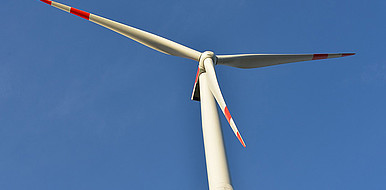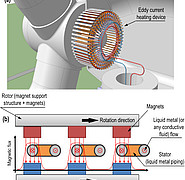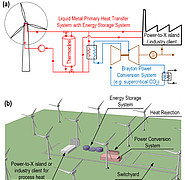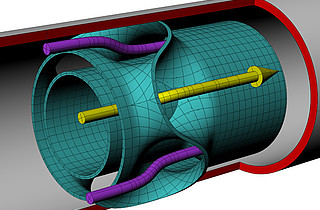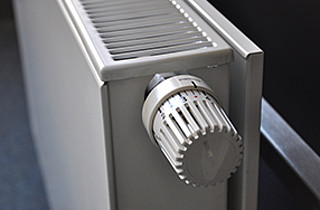Direct wind-to-heat conversion via eddy current
Energy generation from renewable resources should be encouraged as an important contribution to climate protection. Wind is one of the most frequently used renewable energy sources. However, its use is heavily dependent on the weather. Due to inadequate storage solutions, wind energy is not available in reliable quantities – a major disadvantage for its large-scale rollout or for base load use.
State of the art
The challenge is to convert fluctuating wind energy into a stable energy source. This is usually done using an intermediate storage facility as a buffer. There are various methods, for example electrochemical batteries, to store mechanically generated energy from wind or water turbines. However, they require conversion steps that require additional energy, equipment and high investments.
Technology
Researchers at the Institute for Neutron Physics and Reactor Technology (INR) at KIT have invented a device that converts mechanical energy from wind or water turbines directly into CO2-neutral high-temperature heat. The device consists of a series of magnets or magnetic field generators that are attached to the rotor or gearbox of a wind turbine via a bracket. Pipes filled with a conductive fluid – such as molten salt or liquid metal – complete the device. While the magnets connected to the turbine rotate, the pipe system is static. The movement of the magnets results in variable magnetic fields in the conductive fluid. The continuous change in magnetic flux generates eddy currents, which heat up the liquid. Thus, it is a heat source and transport medium. With this direct conversion of "Wind2Heat", temperatures of over 600 degrees Celsius can be achieved.
Advantages
By using it as process heat in energy-intensive industries, such as cement, steel, chemical or hydrogen production and the production of synthetic fuels using high-temperature co-electrolysers (Power-to-X processes), their CO2 footprint is reduced. Combined with a thermal energy storage system, the heat can also be converted into electrical energy at any time and thus contribute to more stable electricity production from renewable resources. Overall, the range of applications for wind energy will be significantly expanded.
Options for companies
KIT is looking for companies from the energy sector to realize pilot projects with direct wind-to-heat conversion via eddy current.
Your contact person for this offer

Innovation Manager Energy Karlsruhe Institute of Technology (KIT)
Innovation and Relations Management (IRM) Phone: +49 721 608-25335
Email: pelisson-schecker@kit.edu

